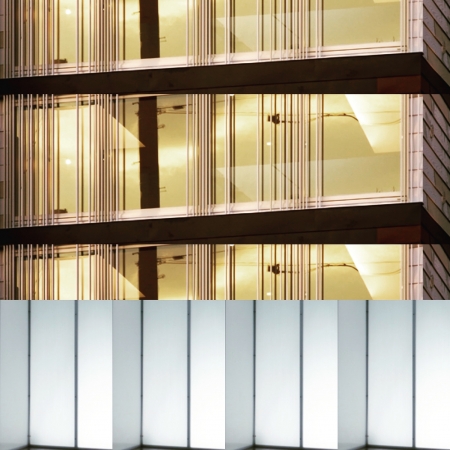小さい窓は省エネではない
窓は大きく取りたいと考える。特に南側の窓はできるだけ大きく取りたい。昔の日本家屋は南側の窓が他の方位の窓に比べて極端に大きかった。昨今では環境問題からCO2排出抑制を目指した省エネ基準により断熱性能が重視され窓は小さくなるばかりである。
断熱を考える時、窓が最大のウィークポイントである。壁や屋根の断熱性能は断熱材の性能や厚みでいくらでも対応できるが、窓はガラス自体の断熱性能が元々低くく極端に上げようがない。だから、窓を小さくしようとする。
断熱性能の向上だけを考えるならば、小さい窓は有効である。しかし、住環境の快適性は断熱性能だけで決まる訳ではなく、断熱性能から紐解けば暑さ寒さの体感が重要である。冬暖かくて夏は涼しい住環境を実現するには南側の窓を大きく取るしかない。
冬の南側の窓はストーブ並の熱源であり、この熱を室内に蓄積すればエネルギーを使わずに室内を暖かくすることができ、夏は日射を遮り日影をつくる工夫をすれば良い。窓を小さくすることは省エネとは逆の発想である。
"Small windows are not energy efficient"
I would like to make the windows bigger. In particular, I want to make the windows on the south side as large as possible. In old Japanese houses, windows on the south side were extremely large compared to windows on other directions. In recent years, due to environmental issues, energy-saving standards aimed at reducing CO2 emissions have emphasized insulation performance, and windows are becoming smaller.
When considering insulation, windows are the biggest weak point. The heat insulation performance of walls and roofs can be handled as much as you want depending on the performance and thickness of the insulation material, but the heat insulation performance of the glass itself is originally low and cannot be increased extremely. So try to make the windows smaller.
Small windows are effective if only the improvement of thermal insulation performance is considered. However, the comfort of the living environment is not determined only by the insulation performance. The only way to create a living environment that is warm in the winter and cool in the summer is to have large south-facing windows.
In winter, the windows on the south side are a heat source similar to that of a stove, and if this heat is accumulated in the room, it is possible to keep the room warm without using energy. Reducing the size of windows is the opposite of energy saving.


